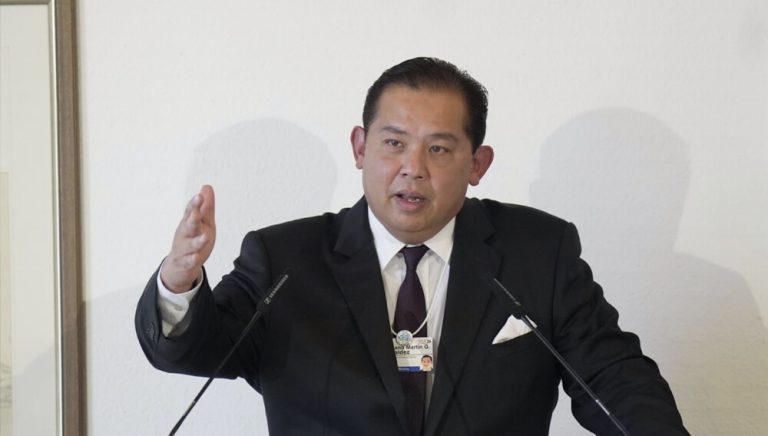Filipino consumers may soon feel another pinch at the gas pump as preliminary market data point to a possible rise in fuel prices in the coming week. Price monitoring from the first three trading days shows an upward trajectory in the cost of petroleum products, suggesting that diesel, gasoline, and kerosene may all become more expensive for the second week of June.
Upward Movement Observed in Early Trading
Industry insiders have been closely watching the movement of international oil prices, which heavily influence the local market. Based on initial trading data, diesel and gasoline prices have climbed by more than ₱0.80 per liter, while kerosene is tracking an increase close to ₱0.80 per liter as well. While these figures are still subject to change as trading continues through the end of the week, the trends signal a strong likelihood of price adjustments.
Fuel companies typically base their pricing decisions on the Mean of Platts Singapore (MOPS), a pricing benchmark used in Southeast Asia. MOPS data from Monday to Wednesday already indicate that refiners and distributors may have to implement another upward adjustment in pump prices, barring a significant drop in the market before the end of the trading cycle.
Price Adjustments Expected by Tuesday
Fuel price adjustments in the Philippines are usually announced on Mondays and take effect every Tuesday. If the current trend holds, motorists will see higher pump prices starting June 18. Industry players typically release the exact amounts a day before the adjustment takes effect.
This potential increase would follow a series of price hikes in previous weeks, partly driven by higher demand in international markets and supply-side constraints in oil-producing countries. Geopolitical tensions, seasonal demand increases, and fluctuations in foreign exchange rates have also contributed to market volatility.
Economic Impact on Consumers and Transport Sectors
Rising fuel prices pose a major challenge for consumers, especially for those relying on private vehicles for daily transport and for public utility vehicle (PUV) drivers who operate under fixed fare rates. Operators of jeepneys, buses, and ride-hailing services may struggle to maintain profitability if fuel prices continue to rise.
For private motorists, the looming hike means higher weekly costs just to get to work or run errands. Meanwhile, logistics companies, delivery services, and other businesses that depend on fuel-powered transportation could experience increased operating costs, which may eventually lead to higher prices for goods and services.
Tricycle and jeepney drivers in particular often bear the brunt of fuel price hikes, especially those who rent their vehicles and must turn over a large share of their daily earnings. Some driver groups have already voiced concerns about the sustainability of their operations should fuel prices continue to climb without any corresponding support from the government.
Calls for Government Intervention
With another round of price hikes potentially on the horizon, consumer groups and transport advocates are renewing their calls for government intervention. Proposals range from the temporary suspension of excise taxes on fuel to direct subsidies for affected sectors.
Transport groups have previously called on the Land Transportation Franchising and Regulatory Board (LTFRB) to expedite the release of fuel subsidies for PUV operators. The Department of Transportation (DOTr) and Department of Social Welfare and Development (DSWD) have also been urged to strengthen financial assistance programs to cushion the impact of rising fuel costs on low-income earners.
Economic planners have acknowledged the impact of energy prices on inflation and purchasing power. While the government continues to explore long-term solutions such as energy diversification and increased renewable energy investments, immediate measures may still be needed to shield vulnerable sectors from short-term price shocks.
Fuel Price Trends in Recent Months
Over the past several months, the cost of fuel in the Philippines has fluctuated due to a combination of global and local factors. From late 2024 into the first half of 2025, the Philippine oil market has seen alternating weeks of rollbacks and price increases.
These fluctuations reflect the complex dynamics of the global oil industry. Disruptions in oil-producing nations, OPEC+ decisions to cut or increase output, shifts in U.S. crude inventories, and global economic indicators all play a role in determining oil prices. Local distributors must then adjust their pricing accordingly, factoring in additional costs such as transportation, refining, and taxes.
For instance, the summer season in the Northern Hemisphere typically leads to higher fuel demand as people travel more and businesses increase operations, leading to a corresponding rise in prices. On the other hand, economic uncertainties such as fears of a global recession or weakening demand from large economies like China can lead to brief dips in oil prices.
Transport Sector’s Struggle with Fuel Costs
Within the Philippines, the public transport sector is one of the most directly affected by volatile fuel prices. Operators and drivers often have little room to maneuver when prices rise, especially since fare adjustments must go through a lengthy approval process with government regulators.
Driver groups have been lobbying for fare hikes in response to previous price increases, but regulators are hesitant to approve these requests due to the added burden it would place on commuters, many of whom are already struggling with the high cost of living.
Some local government units have stepped in with limited subsidies or discount programs for public utility drivers, but these initiatives are often temporary and do not cover the full scope of the problem. Drivers say that unless systemic support is provided, many will be forced to cut back on their operations or leave the transport sector entirely.
Small Business Owners Also at Risk
It’s not only drivers who feel the impact. Small and medium-sized enterprises (SMEs), particularly those in delivery, logistics, food services, and agriculture, are increasingly affected by fuel price increases. Higher transport costs can lead to more expensive goods and services, which in turn puts pressure on consumers and can dampen overall economic activity.
Agricultural producers, for example, depend on fuel-powered machinery and transport to bring goods from farms to markets. Rising costs may reduce their margins or force them to raise prices, further contributing to food inflation.
Food delivery businesses and couriers, many of whom are freelance workers or operate on thin profit margins, have also expressed concerns about being able to sustain their operations if prices continue to rise.
Calls for Energy Policy Reform
Experts and business groups alike are using this opportunity to emphasize the importance of long-term energy policy reform. The current reliance on imported petroleum products leaves the country vulnerable to global market fluctuations.
There is renewed interest in pushing for alternative fuel sources, investment in mass transportation, and promotion of energy-efficient technologies. Advocates are also calling for increased transparency in fuel pricing mechanisms and more robust consumer protection policies.
The push toward electric vehicles (EVs) and hybrid systems is gaining traction, but infrastructure limitations, high upfront costs, and a lack of charging stations have slowed adoption. Still, many believe the shift is necessary to achieve energy resilience.
Final Pricing to Be Announced Soon
While the final decision on next week’s fuel prices will only be made once all trading data is finalized at the end of the week, the outlook appears clear: another increase is likely. Fuel companies will make their announcements on Monday, with the adjusted prices to take effect on Tuesday.
Motorists are encouraged to prepare accordingly, whether that means topping up their tanks before the adjustment or making adjustments to travel plans and commuting options. Meanwhile, the broader conversation around energy security, sustainable transport, and government responsibility continues to gain urgency.











